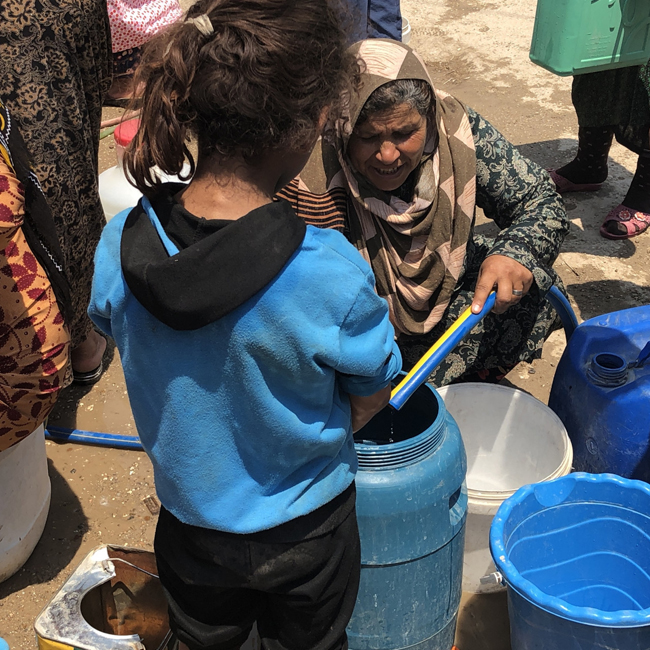Islamabad … News Time
The summer in the Middle East was as hot as 2021, hardly any year before. Temperatures rose above 50 degrees Celsius during the period, which was 7 degrees above the region’s average this year. Extreme heat and wind have caused wildfires in many places, especially in Algeria, where 65 people have been killed. Many factors indicate that the scorching summer of 2021 was not a one-time event but that the summer months were warmer and drier than ever before, according to an analysis by the European Union Institute for Security Studies (EUISS). There are possibilities. A report by Arab Climate Futures, based on numerous meteorological studies, paints a grim picture of the future of the states stretching from Morocco to Oman. These countries are already facing severe environmental problems, but in the future they will be affected by even worse weather and the Middle East will be more affected by this situation than any other region in the world.
Eighty percent of the Middle East region consists of deserts or desert-like areas and it shares these areas with other less developed countries. Although the region has accounted for only 3% of global carbon dioxide emissions since 1850, it has clearly felt the effects of global warming. States in the group called MENA or Middle East and North Africa, for example Algeria, Egypt, Bahrain, Djibouti, Iran, Iraq, Israel, Yemen, Jordan, Qatar, Kuwait, Lebanon, Libya, Morocco, Oman, Saudi Arabia. Temperatures in Syria, Tunisia, the United Arab Emirates, West Jordan and Gaza will rise by 2.7 degrees Celsius between 2040 and 2059, while in some parts of those countries the rise could reach 3.3 degrees Celsius.
Florence Gaub, acting director of the European Union Institute for Security Studies, is one of the two authors of this study report. In his view, these changes are not inevitable. Some of the trends of climate change can be avoided. “For example, a country like Egypt is at a crossroads,” Florence Gaub told Deutsche Welle. The effects of climate change now depend on what the government does. If conditions remain favorable, there will be 20 to 40 percent less rain and this country can afford it. But in the worst case scenario, rainfall could drop by as much as 60 percent. In contrast, it will not be possible to prevent climate change in other countries. Tunisia, for example, will not have enough water available to its population until 2030, despite climate change. It has to do with the growth of the country’s population. Another problem is that most countries in the region lag far behind in the process of recycling contaminated water. Most of the water in the Middle East is used for agriculture. Unlike in the Middle East, European countries use a lot of water in the industrial sector, but also a lot of water is recycled. According to a study, the Middle East is experiencing more drought than Europe. The Middle East receives 173 liters per square meter of water annually, compared to an average of 756 liters per square meter in Europe. In 2011, the Arab Spring clarified the possible political implications of water scarcity. Five years before the Arab Spring, the region was experiencing the worst drought in 100 years, resulting in a dramatic rise in unemployment, especially among those engaged in agriculture. As a result, many rural residents have moved to the cities, and food prices have skyrocketed. Syria, which is still facing water scarcity or drought, was badly affected by the situation. One-fifth of Syria’s total population had lost its source of income. Poverty in this country and the cruel decisions of its ruler Bashar al-Assad many years ago threw the country into the fire of civil war, the flames of which are still burning.
The study report on climate change also found that increasing global warming and warming is not only reducing the amount of water, but also worsening the quality of water. Extreme levels of saltwater and pollution are likely to increase in freshwater due to extreme weather events and incidents. Drought also has a negative effect on water quality because when the flow of water stops, its temperature starts to rise and its oxygen level also starts to decrease. As a result, pollution increases in rivers, no matter how much water there is. The level of pollution in water used for irrigation in war-torn Iraq was more than three times the average recommended by the World Health Organization. According to research, the amount of substances entering the Euphrates River tripled between the 1980s and 2009. These chemicals and salts included calcium, potassium, sodium, chlorine and sulfate, as well as pesticide residues.




